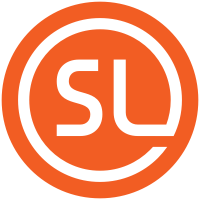manual hintig necessary?

Comments
-
never did it. No one ever complained.
2 -
My experience is that, if something does not work properly, people don’t complain. They just silently decide not to use it.
5 -
It really depends on the use case(s) and client(s).
But mostly, for most fonts and font designers/developers? No.
I will be very curious to know/check the degree to which the new MS Aptos has careful manual hinting. But a default font for all MS Office apps is one of the few places where manual TT hinting might still makes sense. Even so, I would not be surprised if they did not do it. The common rendering modes in Windows 8 and later do not take much advantage of it.
Which btw means, IMO, that mostly the PostScript hinting philosophy is now retroactively victorious! That is, a little bit of broad info in the font, and light glyph-level hinting, most of which could be automated, and the rest of the intelligence goes in the rasterizer.
Mind you, for at least the first 10–20 years after the ~ 1991 introduction of TrueType, manually-hinted TT really did look better on an awful lot of screens, especially at small and text sizes, but even into subheads. Increases in resolution and changes in rasterizing strategies have made it less critical.5 -
I think Thomas already kind of answered this, but in a similar vein, I'm curious the current perspective on editors auto-hint settings/feature — its usefulness with basic alignment zones set (maybe satisfactory in most cases?), or potential conflicts.0
-
We mostly do autohinting these days. The majority of rendering, even in environments like Windows that still respect (most) TT instructions, benefits from y-direction alignment controls and some shapes from y-direction interpolation, and that can be automated fairly reliably.
That said, there is no one-size-fits-all answer to the question, because individual designs, writing systems, and target environments may combine in ways that still benefit from manual hinting, e.g. to be able to delta y-direction features at specific sizes, or to use instructions that apply in specific rendering environments. In those cases, we would use a semi-automated approach with VTT, which enables us to go in and manually tweak edit the automated hinting, add higher level instructions, etc.4 -
Fwiw, I just confirmed that ALMOST all the Aptos family has no glyph-level manual hinting.
The Narrow styles however are the new default in Excel, and Excel still uses old-school GDI rendering (!) so those styles are getting manual hinting... which is still in progress as I understand it.7 -
The only manual hinting I do is in PostScript—I find that auto-hinting of the letter “i” (and j) in some typefaces, at some weights, causes the stem of the letter to be thickened to the width of the tittle, so when that happens, I manually remove the tittle hint.2
-
Still necessary for devices with 96 – 120 – 150 dpi … the difference between autohinting and manual is in the details which is what matters most2
-
@Thomas Phinney It is important to differentiate between "manual hinting" intended for GDI, and that intended for DWrite. I spent many hours reviewing, correcting, and mastering the autohinting applied to Aptos. It may not have been x-direction hints, but it was quite extensive and required every glyph to be checked individually.
Generally, I find that autohinting (as in just hitting "autohint" and calling it a day) only works on a very small subset of fonts, and even then produces mediocre results. Pretty much everything needs some sort of manual review, and usually quite extensive modification. Autohinting anything outside of Latin is a total cluster and pretty much all of that needs to be thrown out and redone by hand.
So in the realm of TTF hinting, what to do? I think that: Manually corrected hinting > No hinting (GASP set to full blur) > Autohinting > Bad hinting.
Do I think hinting is still important? Definitely. You can see the quality difference between a font that has been properly hinted and one that has not, even on higher resolution screens. And like Mike says, <150 DPI screens are around and will continue to be around for a long time.8 -
Thanks Aaron! That is super insightful. Both the amount of time tweaking the autohinting parameters (WAY more than most people ever do), and the ranking of hinting approaches.
I think a lot of people might be surprised that, in that hierarchy, you rate no hinting (GASP set to full blur) as preferable to straight autohinting.0 -
Yes. I've seen enough bad results from autohinters to ever feel comfortable trusting them.Oh, also, it is also worth noting that because Aptos is built as a variable font, there's a whole host of modifications necessary to address that because autohinters aren't that smart
 0
0 -
We still do manual hinting (in different degrees) for all TrueType-based fonts we deliver.
The difference on modern systems is not huge, but noticeable. For example, I just generated a variable font for TheAntiqua that contains custom functions I wrote that will
- keep the x-height constant across the weight axis for small sizes
- keep top accents from crashing into their base letters
- control at which height overshoots become visible
You don't get such control with autohinting. And sadly, on macOS the hinting is ignored anyway
Here are two examples, screenshots from Edge. On the left is the hinted version, on the right the unhinted (full-blur gasp table) version. They need to be viewed at 100% scale, of course.
TheAntiqua Black at 15 ppm
TheAntiqua Plain at 23 ppm
3 -
While I agree with pretty much everything Aaron wrote regarding quality, I’m finding that no one wants to pay for manual hinting any more. For a long time, I have quoted hinting costs separately, because failing to do so tended to kill projects, and increasingly customers simply opted not to have the fonts hinted or to live with autohinted output.
3 -
If ever there were a demand for AI in type design, it would be in manual hinting. I wonder if someone is already working on that.
1 -
AI-powered manual hinting == better autohinting.0
-
If AI hinting is that good, it should likely be done by the rendering device or layout app—after all, that is where Adobe’s “optical kerning” takes place, not in the font.1
-
@Jens Kutilek You have some very interesting examples. Especially in the two texts below, one can see that the text on the right is somewhat blurred. Are you working with FontLab 8 or Glyphs? The autohinting is different depending on the software.0
-
‘Autohinting’ in the context of TTF may refer to a number of different tools and processes, but probably most frequently to ttfautohint or to tools incorporating it. A lot of modern build processes incorporate ttfautohint as something that is done to fonts after they are generated or exported from whatever design tool is used.
0 -
I am new to font hinting. Aaron, Thomas and Jens, all of you mention "no hinting" respectively "unhinted" and set in brackets "GASP set to full blur" or "full-blur gasp table" as an alternative to auto hinting.
How do i achieve this "full blur"? Simply by exporting the font unhinted? Or do I need to set parameters somewhere to get better or correct "full blur"?
Do you consider this approach valid for both, static and variable fonts?0 -
hi Donat, this article I wrote may be useful, its pretty extensive and covers everything that you might need to know about VTT Hinting for Variable fonts.
https://googlefonts.github.io/how-to-hint-variable-fonts/
In addition, this article gives many examples of the typical problems that hinting can address, and so might be useful in answering the original question about if manual hinting is necessary. I go into some detail on the 'gasp' table, including some historical details. If you want to achieve full blur in DirectWrite environments, such as most modern browsers and MS Applications, the font can be un-hinted and the 'gasp' table should be set to enable symmetric smoothing at all sizes. The approach is suitable for both Static and Variable fonts.
1 -
What font tool(s) are you currently using, Donat? A lot of the people on this thread are used to working with multi-tool production workflows, and I think few of us actually produce fonts by simply hitting the export/generate fonts button in a tool like Glyphs or FontLab. Whether and how you are able to appropriately set gasp table values within your font design tool will depend on what tool that is.1
-
Thank you for the link, I have seen this detailed text before. Though VTT is very powerful and interesting, as a beginner I do not consider working with VTT in the moment. I work on Mac and do not have experience with running virtual Windows. I do my first steps within Fontlab 8 to experiment with settings (use Fontlab? use ttfAutohint?) and whether i can improve the auto-hinting with manual hints, as seen in some videos (also yours). I know that I can not judge the hinting here entirely, because of my Mac computer.
That is what i had in mind, before i’ve seen this thread. Here I find now the suggestion not to hint at all and set GASP to full blur - that sounds interesting, hence i asked how to do so.
I could not find a precise table for GASP (as you show it for VTT) in my Fontlab 8 font-info but maybe it is these settings below? Is this addressing symetric smoothing at all sizes? (Do not use TT hinting; zero/0 stands for „always smooth” in Fontlab.)

Yeah, producing fonts can be complicated for one being 20 years behind! No multi-tool workflow here. It is Fontlab 8 I am working with. I try to stick to just that for all font aspects, not to technically overstrain myself.
Is the above shown table (picture) the right place to enter GASP values in Fontlab?
Thank you both for posting!
1 -
That is indeed the GASP settings in FontLab 8.2
-
@donat raetzo If you're having trouble getting what you want out of FL8, you might also consider running Chris Simpkin's dehinter tool https://github.com/source-foundry/dehinter. Aside from its main purpose of removing all TT hinting from a font, it also sets the GASP table for full blur.5
-
great, thank you both for the info.0
-
At LucasFonts, we still use FontLab Studio 5Typedesigner said:@Jens Kutilek You have some very interesting examples. Especially in the two texts below, one can see that the text on the right is somewhat blurred. Are you working with FontLab 8 or Glyphs? The autohinting is different depending on the software. We usually manually hint TrueType MM files, and then transform the FL hinting code into TrueType assembly using our own custom tools, which allow improvements over the TrueType assembly generated directly by FLS5.
We usually manually hint TrueType MM files, and then transform the FL hinting code into TrueType assembly using our own custom tools, which allow improvements over the TrueType assembly generated directly by FLS5.
For some projects, we use Glyphs or VTT.2
Categories
- All Categories
- 46 Introductions
- 3.9K Typeface Design
- 487 Type Design Critiques
- 567 Type Design Software
- 1.1K Type Design Technique & Theory
- 659 Type Business
- 863 Font Technology
- 29 Punchcutting
- 522 Typography
- 120 Type Education
- 325 Type History
- 77 Type Resources
- 112 Lettering and Calligraphy
- 33 Lettering Critiques
- 79 Lettering Technique & Theory
- 560 Announcements
- 94 Events
- 115 Job Postings
- 170 Type Releases
- 180 Miscellaneous News
- 276 About TypeDrawers
- 54 TypeDrawers Announcements
- 120 Suggestions and Bug Reports










